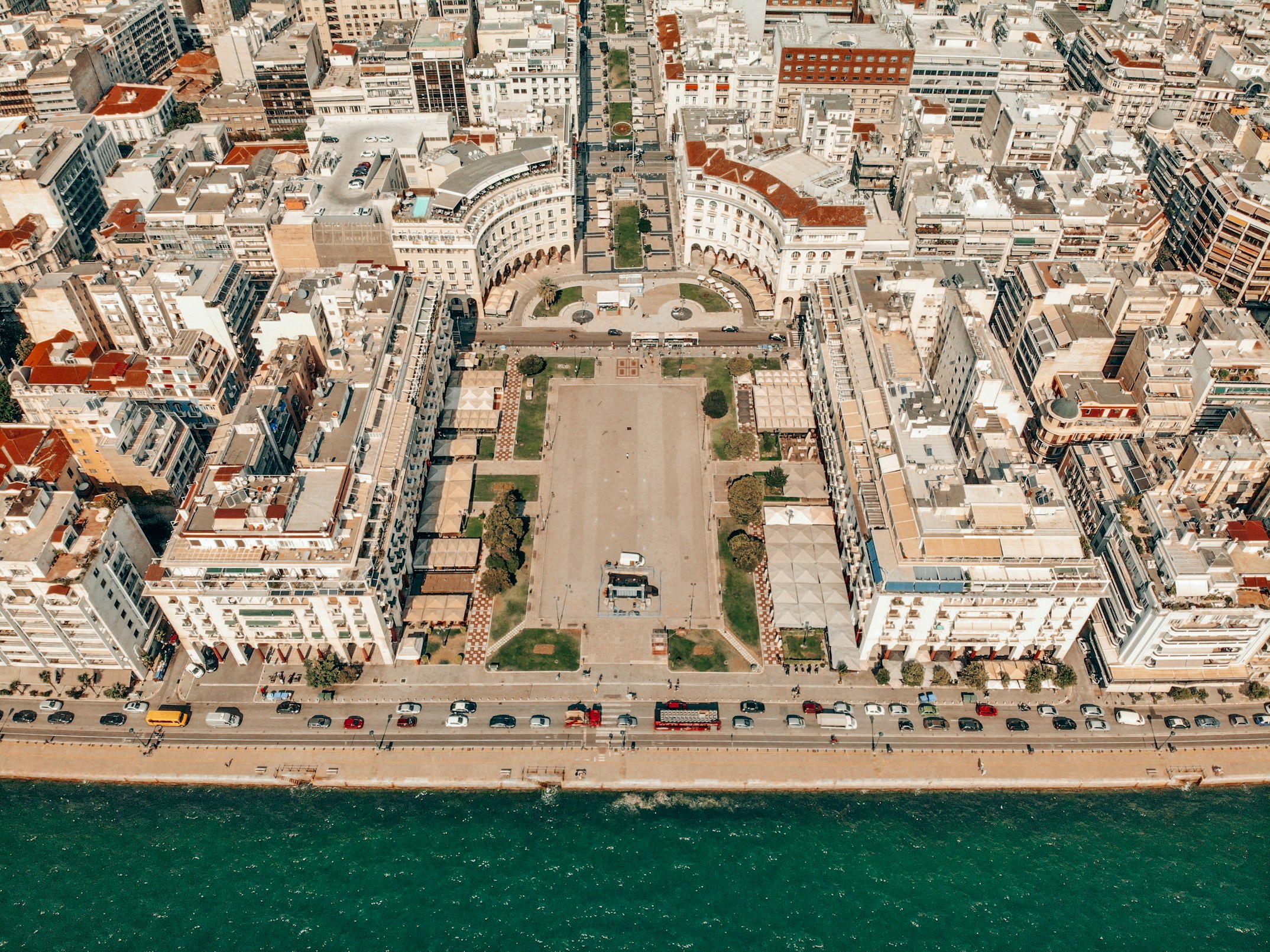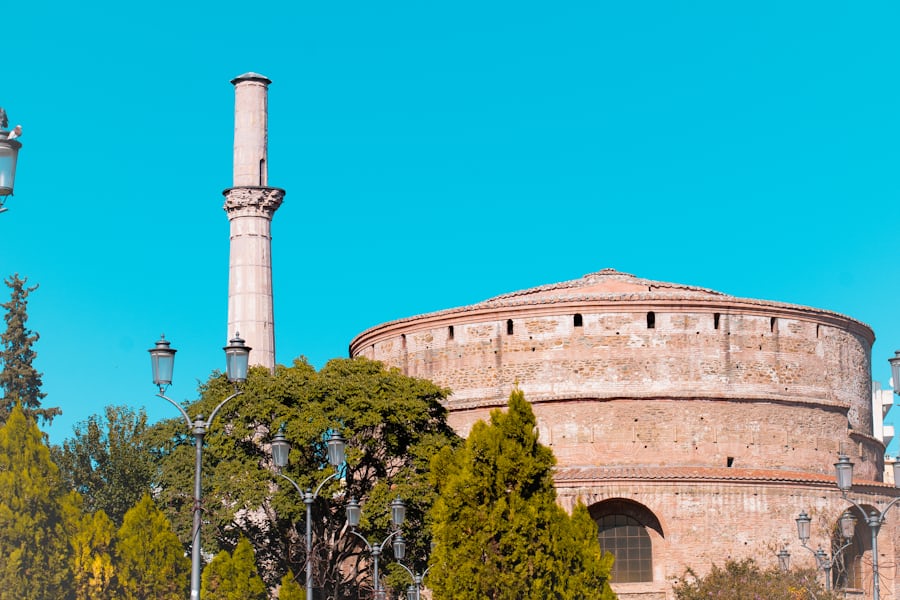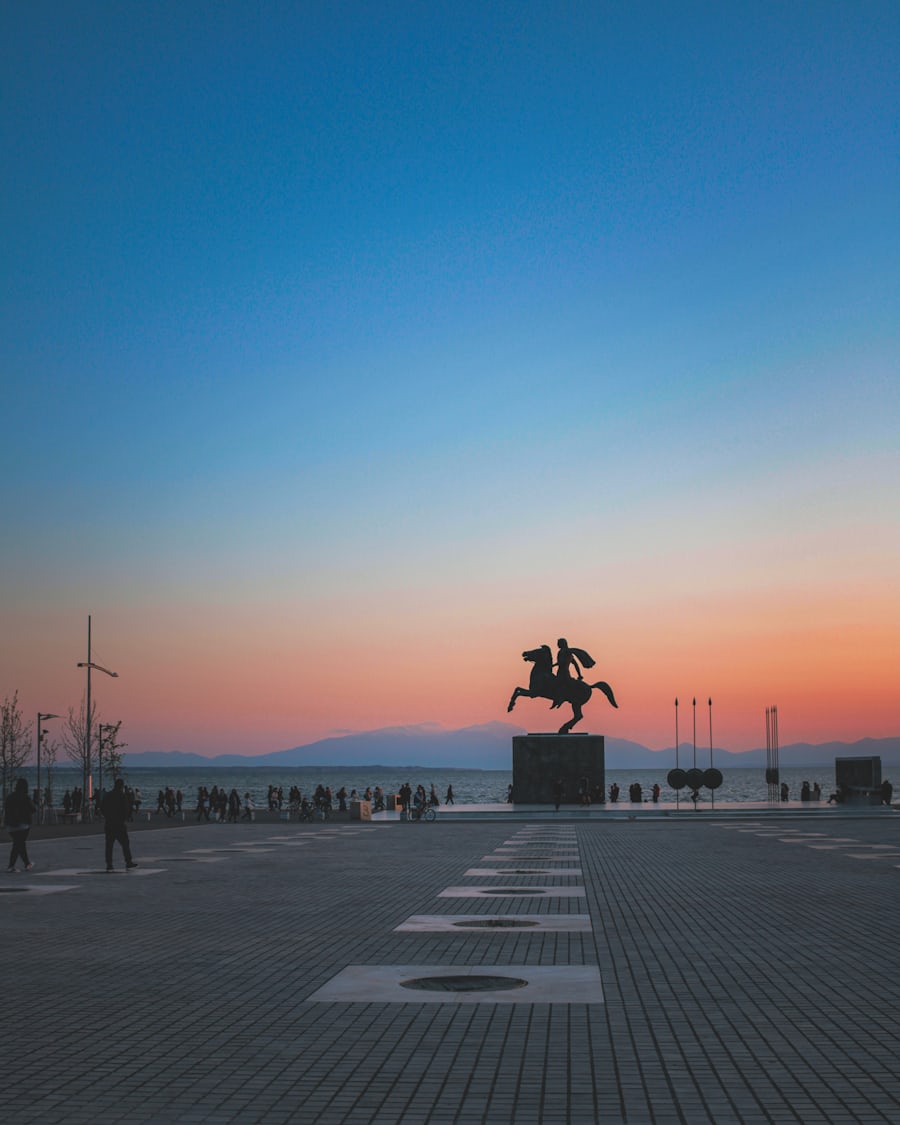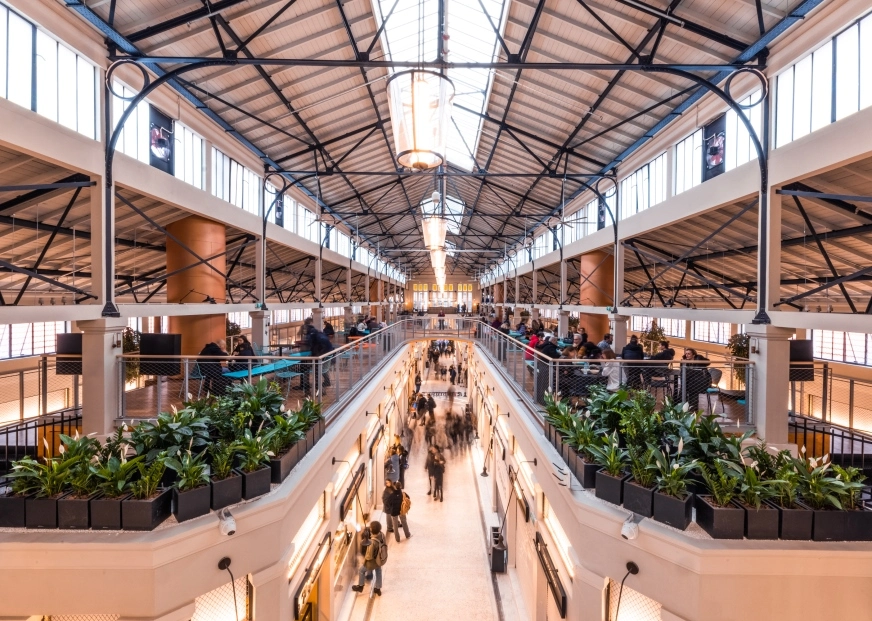Aristotelous Square

Aristotelous Square is the main city square of Thessaloniki, Greece and is located on Nikis avenue (on the city's
waterfront), in the city center. It was designed by French architect Ernest Hébrard in 1918, but most of the
square was built in the 1950s. Many buildings surrounding the central square have since been renovated and
its northern parts were largely restored in the 2000s.
 Aristotelous Square is one of the most famous places
in all of Greece and almost synonymous with the city of Thessaloniki itself. The square plays an
important role in the sociopolitical life not only of the city, but of the wider country as well. Numerous
large rallies and political speeches have been organized in Aristotelous Square, such as the rally for
Macedonia in 1992. Additionally the square is used for many cultural events, such as
festivals and the annual Christmas and carnival celebrations. It is an important tourist attraction
for the city, and the numerous cafes and bars that line up the square make it popular with the younger
generations.
Aristotelous Square is one of the most famous places
in all of Greece and almost synonymous with the city of Thessaloniki itself. The square plays an
important role in the sociopolitical life not only of the city, but of the wider country as well. Numerous
large rallies and political speeches have been organized in Aristotelous Square, such as the rally for
Macedonia in 1992. Additionally the square is used for many cultural events, such as
festivals and the annual Christmas and carnival celebrations. It is an important tourist attraction
for the city, and the numerous cafes and bars that line up the square make it popular with the younger
generations.

 The Rotonda (or Rotunda) is one of the most important Roman monuments in Thessaloniki. It stands just next to
the Arch of Galerius in the city center and it is also known as the Church of Agios Georgios. This cylindrical
structure was built in 306 AD by the Roman tetrarch Galerius, who intended it to be his grave. At first, it
worked as a temple but it remains unknown to which god this temple was dedicated.
The Rotonda (or Rotunda) is one of the most important Roman monuments in Thessaloniki. It stands just next to
the Arch of Galerius in the city center and it is also known as the Church of Agios Georgios. This cylindrical
structure was built in 306 AD by the Roman tetrarch Galerius, who intended it to be his grave. At first, it
worked as a temple but it remains unknown to which god this temple was dedicated.



 Agora Modiano, thanks to its extremely high level of quality, aims to become a reference point for Thessaloniki
in
every way possible; to offer the finest domestic and international flavors, in an environment with a distinct
architectural identity and historical significance, in an unparalleled combination of Gastronomy and Culture
that
will give a unique pulse to the city’s heart.
Agora Modiano, thanks to its extremely high level of quality, aims to become a reference point for Thessaloniki
in
every way possible; to offer the finest domestic and international flavors, in an environment with a distinct
architectural identity and historical significance, in an unparalleled combination of Gastronomy and Culture
that
will give a unique pulse to the city’s heart.
 Taking into account the unique – and institutionally recognized – monumental character of the Modiano Market,
its
restoration was carried out along three axes: the constructional – where the most modern building practices and
the most suitable materials were used; the architectural – where its profile was preserved unchanged; and the
functional – in terms of logistics and the smooth operation of each store. The successful implementation of all
the solutions in all three areas was a big bet – which was clearly won. The Modiano Market will offer a
high-quality gastronomic experience to its visitors, in keeping with the identity of the city, in an environment
where History, Culture, Architecture, Taste, and People will co-create a living landmark – as envisioned in 1930
by its founder, Eli Modiano, and as continued today by the Fais Group.
Taking into account the unique – and institutionally recognized – monumental character of the Modiano Market,
its
restoration was carried out along three axes: the constructional – where the most modern building practices and
the most suitable materials were used; the architectural – where its profile was preserved unchanged; and the
functional – in terms of logistics and the smooth operation of each store. The successful implementation of all
the solutions in all three areas was a big bet – which was clearly won. The Modiano Market will offer a
high-quality gastronomic experience to its visitors, in keeping with the identity of the city, in an environment
where History, Culture, Architecture, Taste, and People will co-create a living landmark – as envisioned in 1930
by its founder, Eli Modiano, and as continued today by the Fais Group.
 Its 75 shops are divided into groups, depending on the type of food they offer: essentials such as vegetables,
meat, and seafood, certified organic products, local Greek flavors, Fair Trade products, and ethnic proposals
from
all over the world. All of them are carefully selected, with a non-negotiable level of quality. In addition, on
the two balconies in the northern and southern parts of the Market, there will be food outlets – with most of
them
drawing inspiration from the character and product range of the Market.
Modiano Market is back. Not just as the largest and most modern covered market in Thessaloniki, but as living
proof of its timeless culinary and cultural legacy.
Its 75 shops are divided into groups, depending on the type of food they offer: essentials such as vegetables,
meat, and seafood, certified organic products, local Greek flavors, Fair Trade products, and ethnic proposals
from
all over the world. All of them are carefully selected, with a non-negotiable level of quality. In addition, on
the two balconies in the northern and southern parts of the Market, there will be food outlets – with most of
them
drawing inspiration from the character and product range of the Market.
Modiano Market is back. Not just as the largest and most modern covered market in Thessaloniki, but as living
proof of its timeless culinary and cultural legacy.